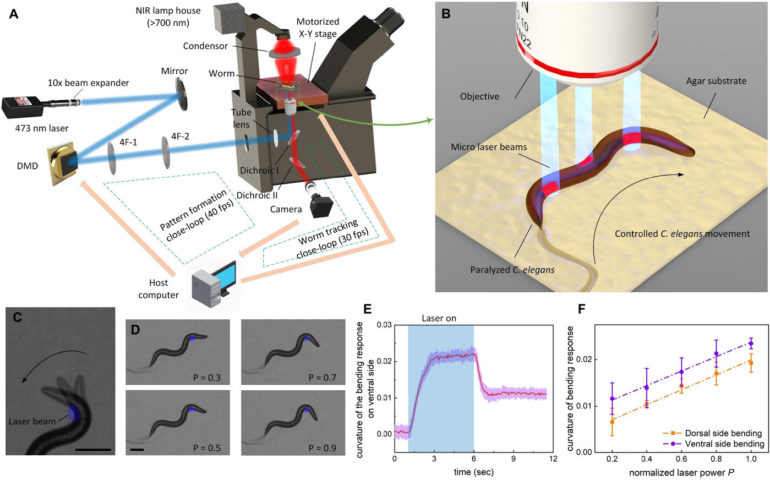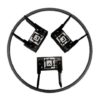A team of researchers from the University of Toronto and Lunenfeld-Tanenbaum Research Institute, has developed a technique for controlling the movements of a live nematode using laser light. In their paper published in the journal Science Robotics, the group describes their technique. Adriana San-Miguel with North Carolina State University has published a Focus piece in the same journal issue outlining the work done by the team.
As scientists continue to create new kinds of robots, they often look to nature for inspiration. Researchers have found that studying locomotion in natural organisms is one of the best ways to develop strategies for developing microrobots. In this new effort, the researchers looked to the nematode for inspiration. They note that prior efforts to control tiny robots have very often involved combining electronics with small creatures such as cockroaches, controlling them via external stimuli, such as small charges of electricity. In this new effort, the researchers sought to gain better control of a creature using a different approach.
It involved genetically engineering several nematode specimens so that the muscles they used for locomotion would activate when exposed to light. They then injected a drug into the worms to paralyze them. Next, they placed them on an agar substrate beneath a triple-beam laser outfitted with a microscope and camera. Then, by optimally illuminating only small parts of the worm at a time, they found that they could force the nematode to move in desired directions without damaging it—the laser light was of sufficient strength to penetrate the skin of the nematode and stimulate the muscles, which would constrict and relax on demand. The researchers demonstrated their control of the nematode by moving it through a small maze. They note that the key to properly directing their cyborg worm was to first study how the worm used muscles during locomotion and then to mimic those actions. They next plan to replicate their efforts using portable equipment to make their robotic worm usable in real-world applications.
Researchers discover fundamental rules for how the brain controls movement
More information:
Xianke Dong et al, Toward a living soft microrobot through optogenetic locomotion control of Caenorhabditis elegans, Science Robotics (2021). DOI: 10.1126/scirobotics.abe3950
Adriana San-Miguel, Optogenetics gets the worm, Science Robotics (2021). DOI: 10.1126/scirobotics.abj3937
2021 Science X Network
Citation:
Using optogenetics to control movement of a nematode (2021, July 1)
retrieved 3 July 2021
from https://techxplore.com/news/2021-07-optogenetics-movement-nematode.html
This document is subject to copyright. Apart from any fair dealing for the purpose of private study or research, no
part may be reproduced without the written permission. The content is provided for information purposes only.



